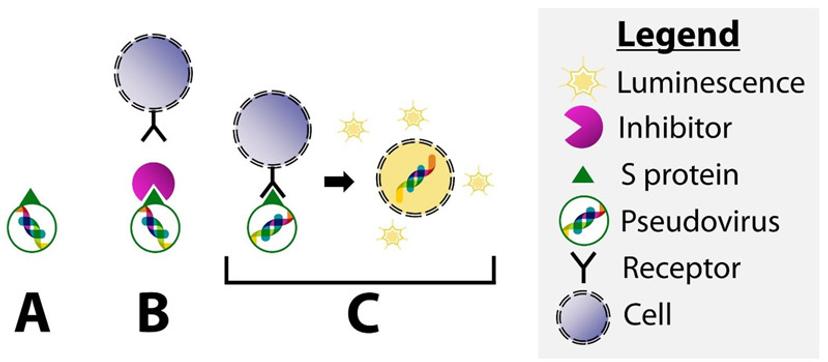Screening for SARS-CoV-2 spike inhibitors
In this guest article by RayBiotech Life, learn how ELISA and pseudoviruses enable COVID-19 drug development
30 Aug 2021
COVID-19 is caused by the severe acute respiratory syndrome coronavirus 2 (SARS-CoV-2). One of the first and critical steps in infection is the entry of SARS-CoV-2 into host cells, which is mediated by the SARS-CoV-2 Spike (S) protein’s interaction with endogenous receptors (e.g., ACE2, NRP1, AXL). Thus, inhibiting the S protein is a major focus of COVID-19 drug development efforts. S protein inhibitors are screened using enzyme-linked immunosorbent assays (ELISAs) and SARS-CoV-2 pseudoviruses.
ELISA is an in vitro, and plate-based method used to detect the Spike-receptor complex (Figure 1). Briefly, the sample and receptor competitively bind to the S protein, which is coated on the plate. The amount of S-receptor complex can then be measured using an anti-receptor antibody and a detection antibody. Get results within 5 hours with these simple-to-use kits!

A SARS-CoV-2 pseudovirus is a viral particle that can mimic viral entry, but is not considered a live virus. As such, SARS-CoV-2 pseudoviruses are employed to screen for S inhibitors. In the example demonstrated in Figure 2, a SARS-CoV-2 pseudovirus expresses the S protein on the surface while containing a gene encoding for luciferase. Once the pseudovirus enters the host cell, the luciferase is expressed. In the presence of a luciferase substrate, cells that have been successfully infected with the pseudovirus will luminescence. In the presence of S inhibitors, the level of luminescence will decrease. Obtain data within 2 weeks with RayBiotech’s full testing service.

